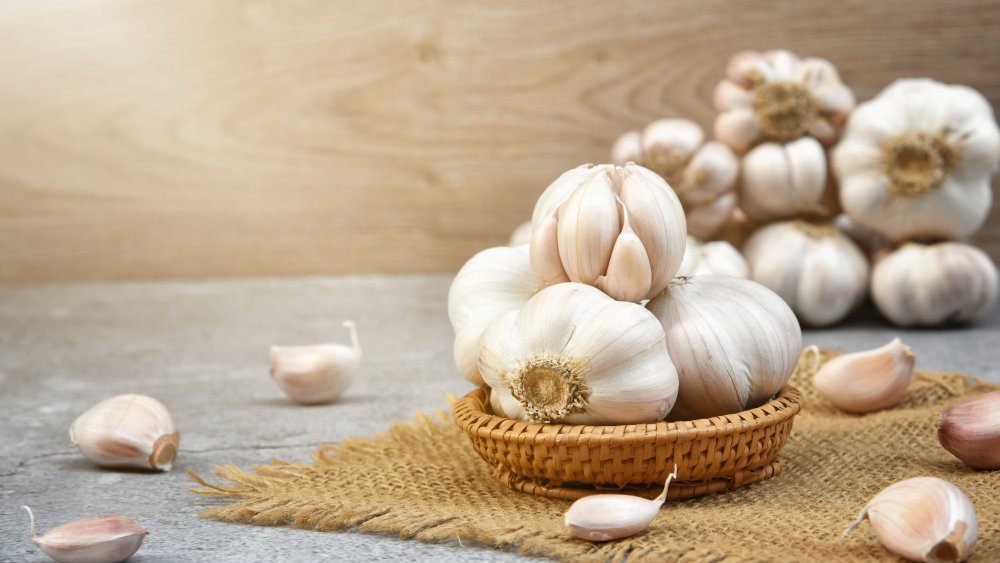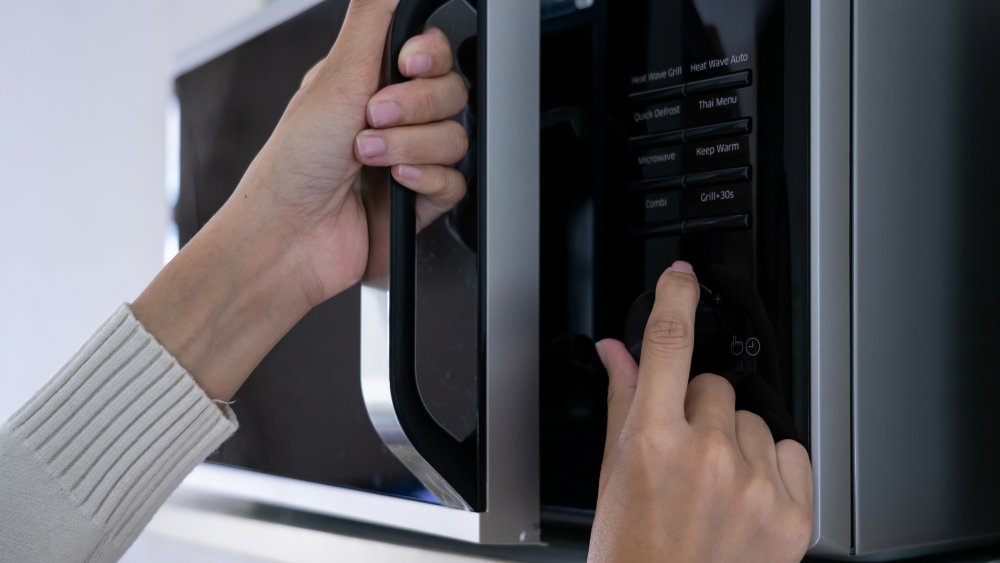This Is The Fastest Method For Peeling Garlic
We all know that garlic is the "it" aromatic. Per Penn State Extension, in the United States, we consume about two pounds per capita. That's a lot of garlic, but not as much as South Korea eats. South Korea's garlic game is strong. They eat about 16.75 pounds per person each year, giving new meaning to the New York saying, "A nickel will get you on the subway but garlic will get you a seat."
Garlic has many uses. We use it in anything Italian, marinades galore, soups, stir fries, and, well, to keep colds and vampires at bay. But as much as we love this root vegetable which is part of the lily family, we hate to peel it (via Aggie Horticulture). It can take forever. Forever. Lucky for us, Kitchn tested six popular methods to peel your garlic — each of which claimed to be quick, easy, and produce perfectly peeled garlic — and shared the results with all of its adoring internet fans. The outlet tested everything from loosening the cloves in hot water to shaking them between two bowls to smashing them with a back of a knife to shaking garlic cloves in a cocktail shaker to using the trusty microwave. So, which trick emerged victorious over the others?
Use your microwave to peel your garlic cloves
A simple 20 seconds in your microwave will make peeling your garlic as easy as pie. Seriously, if you pop an entire bulbous head in the microwave for 20 seconds, and then let it cool for 20 seconds so you don't burn your fingers, the paper-thin peels come right off. It's pretty amazing. According to NPR's The Salt, steam is what causes the skins to separate from the rest of the garlic, leaving a naked clove ready to chop up.
However, as fabulous as this method sounds, an assistant professor in the department of food science at Cornell University named Gavin Sacks told Allison Aubrey, the show's host, that there is a disadvantage to using the microwave method when peeling your garlic. Sacks noted that, "Since the pungent compound in garlic is formed enzymatically, once raw garlic is crushed or cut, it is likely that the resulting microwaved garlic will be less pungent than non-microwaved garlic." But it is also worth noting that Aubrey decided to give this method a go and found no noticeable changes in the garlic's taste or texture.

